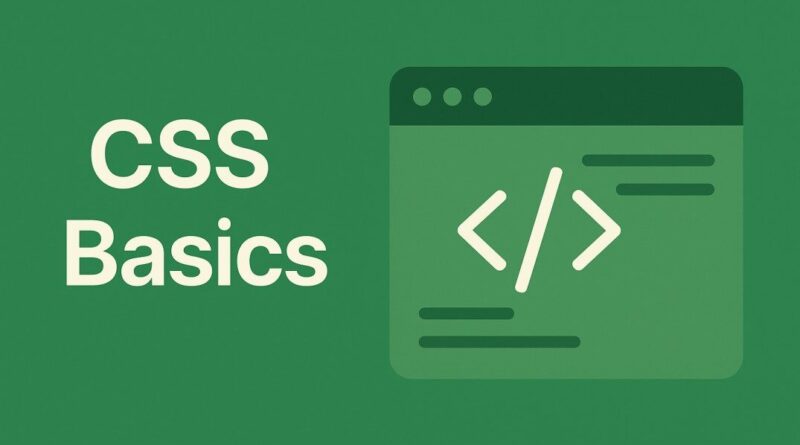CSS – Mastering the Modern Web: Unlocking Responsive Design with CSS Media Queries
Mastering the Modern Web: Unlocking Responsive Design with CSS Media Queries
In today’s fast-paced digital world, your website needs to look stunning and function flawlessly on every device – from the tiniest smartphone screen to the largest desktop monitor. Gone are the days of building separate websites for different devices. The secret to this adaptability? Responsive Web Design, powered by the incredible flexibility of CSS Media Queries.
If you’ve ever wondered how websites magically adjust their layout when you resize your browser window or switch from your laptop to your tablet, you’ve witnessed media queries in action. Let’s dive into this essential concept and explore how it empowers developers to create truly modern and user-friendly web experiences.
The Powerhouse: @media screen and (min-width: ...) {}
At the heart of responsive design lies the @media rule in CSS. Think of it as a set of instructions you give your website: “Hey, if certain conditions are met, apply these specific styles!”
One of the most common and powerful conditions you’ll encounter is @media screen and (min-width: ...){}. Let’s break it down:
@media screen: This tells the browser to apply these styles only when the content is being displayed on a screen (which covers desktops, laptops, tablets, and smartphones). You can also target other media types likeprintfor printer-friendly versions!and (min-width: ...): This is where the magic happens for responsiveness.min-widthmeans “apply these styles only if the viewport (the visible area of the browser) is at least this wide.” For example,@media screen and (min-width: 768px){}would apply the enclosed styles only when the screen is 768 pixels wide or wider.
This simple yet powerful syntax allows you to create different style rules for different screen sizes, ensuring your content always looks its best.
Defining Your Landscape: Understanding Breakpoints
So, how do you decide when to apply different styles? That’s where breakpoints come in. Breakpoints are essentially those specific min-width or max-width values you choose in your media queries where your layout needs to change.
Imagine your website as a chameleon, changing its colors (or layout) at certain trigger points. These trigger points are your breakpoints. Common breakpoints often align with popular device sizes:
- Small screens (smartphones):
max-width: 576px - Medium screens (tablets, small laptops):
min-width: 577pxandmax-width: 992px - Large screens (desktops):
min-width: 993px
However, a truly effective approach to breakpoints isn’t just about targeting device sizes. It’s about letting your content dictate where the layout needs to adapt. When does your navigation bar become too cramped? When does an image look too small or too large? Those are your ideal breakpoints.
Flowing vs. Fixed: Fluid Layouts vs. Fixed Layouts
Before responsive design became the norm, websites often used fixed layouts. This meant the website’s width was set to a specific pixel value (e.g., 960px) and would look the same regardless of the screen size. The problem? On smaller screens, users would have to scroll horizontally, and on larger screens, the content would just sit in the middle with vast empty spaces. Not ideal for a great user experience!
Enter fluid layouts. In a fluid layout, elements are sized using percentages or other relative units (like em or vw). This means they stretch and shrink proportionally as the screen size changes. Combined with media queries, fluid layouts are the backbone of responsive design, allowing your content to gracefully adapt to any screen. This creates a much more organic and visually appealing website for every visitor.
Strategy First: Mobile-First vs. Desktop-First Approach
When building your responsive website, you have two primary strategies:
- Desktop-First Approach: This traditional method involves designing your website for large screens first and then using media queries with
max-width(e.g.,@media screen and (max-width: 767px){}) to “undo” or adjust styles for smaller screens. While this works, it can sometimes lead to more complex CSS, as you’re constantly overriding previous styles. - Mobile-First Approach: This is the modern and highly recommended strategy. Here, you design and style your website for the smallest screens first (e.g., smartphones). Then, you use
min-widthmedia queries (e.g.,@media screen and (min-width: 768px){}) to progressively enhance the layout and add more complex features as the screen size increases.
Why is mobile-first often better?
- Performance: Mobile devices typically have slower internet connections and less processing power. By styling for mobile first, you ensure a lean and efficient codebase that loads quickly on all devices.
- Simpler CSS: You’re building up styles rather than overriding them, often resulting in cleaner and more manageable CSS.
- User Experience Focus: It forces you to think about core content and functionality first, which is crucial for mobile users who are often on the go and need quick access to information.
The Future is Responsive!
Responsive web design isn’t just a trend; it’s a fundamental requirement for any successful website in today’s multi-device world. By mastering CSS Media Queries, understanding breakpoints, embracing fluid layouts, and adopting a mobile-first strategy, you’re not just building websites; you’re crafting exceptional digital experiences that reach a wider audience and keep them engaged.
So, next time you’re building a website, remember the power of @media and design with adaptability in mind. Your users (and your search engine rankings!) will thank you for it!

